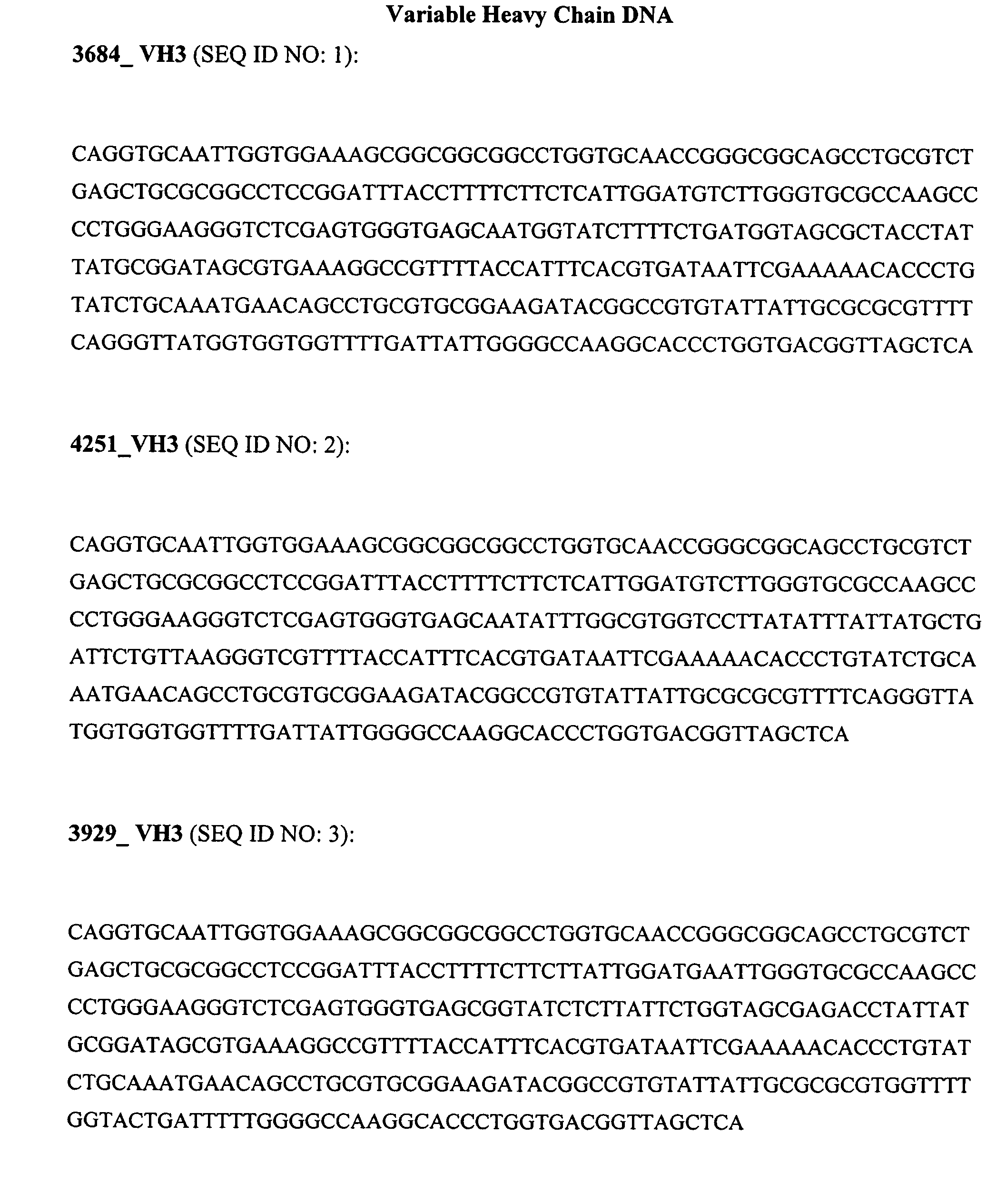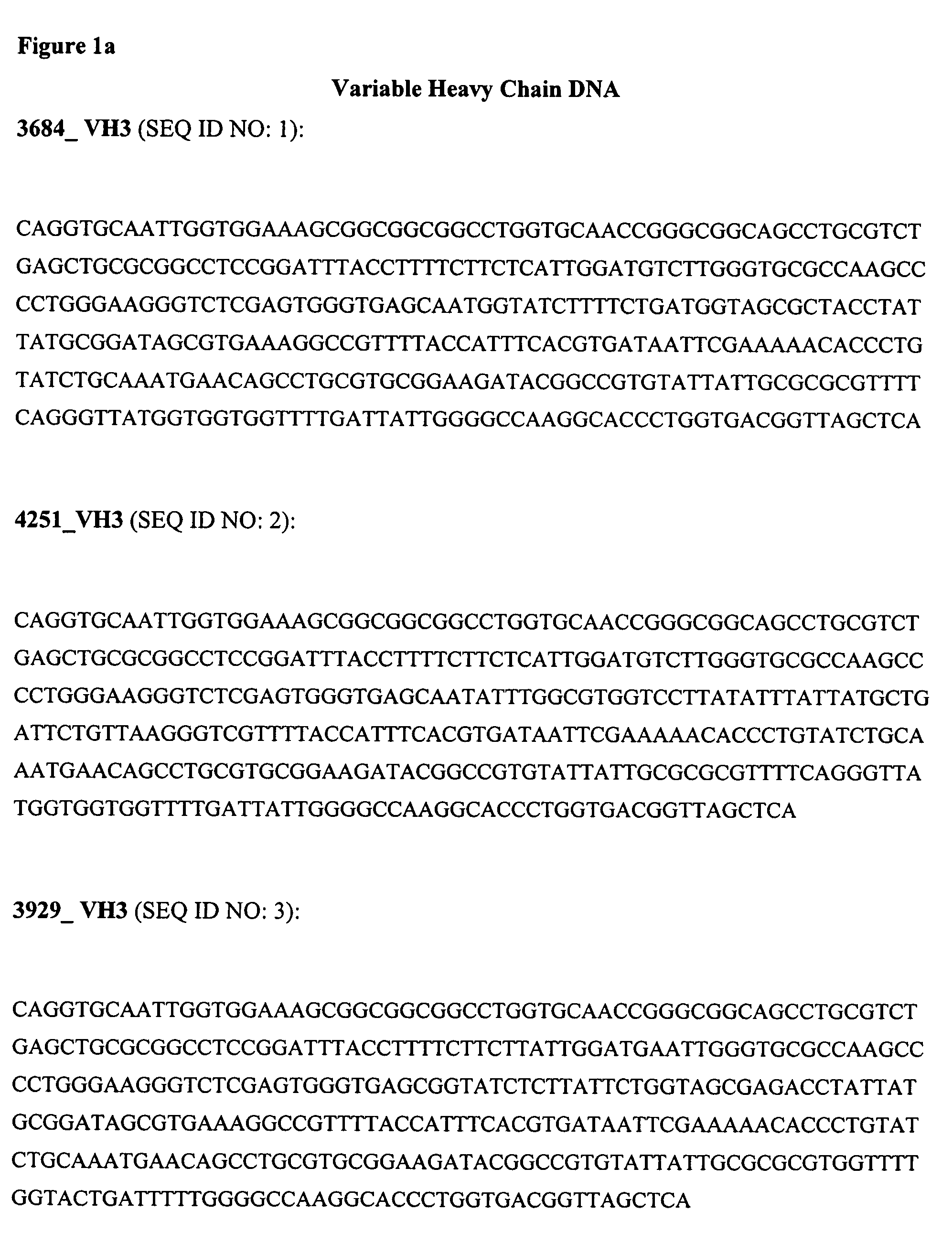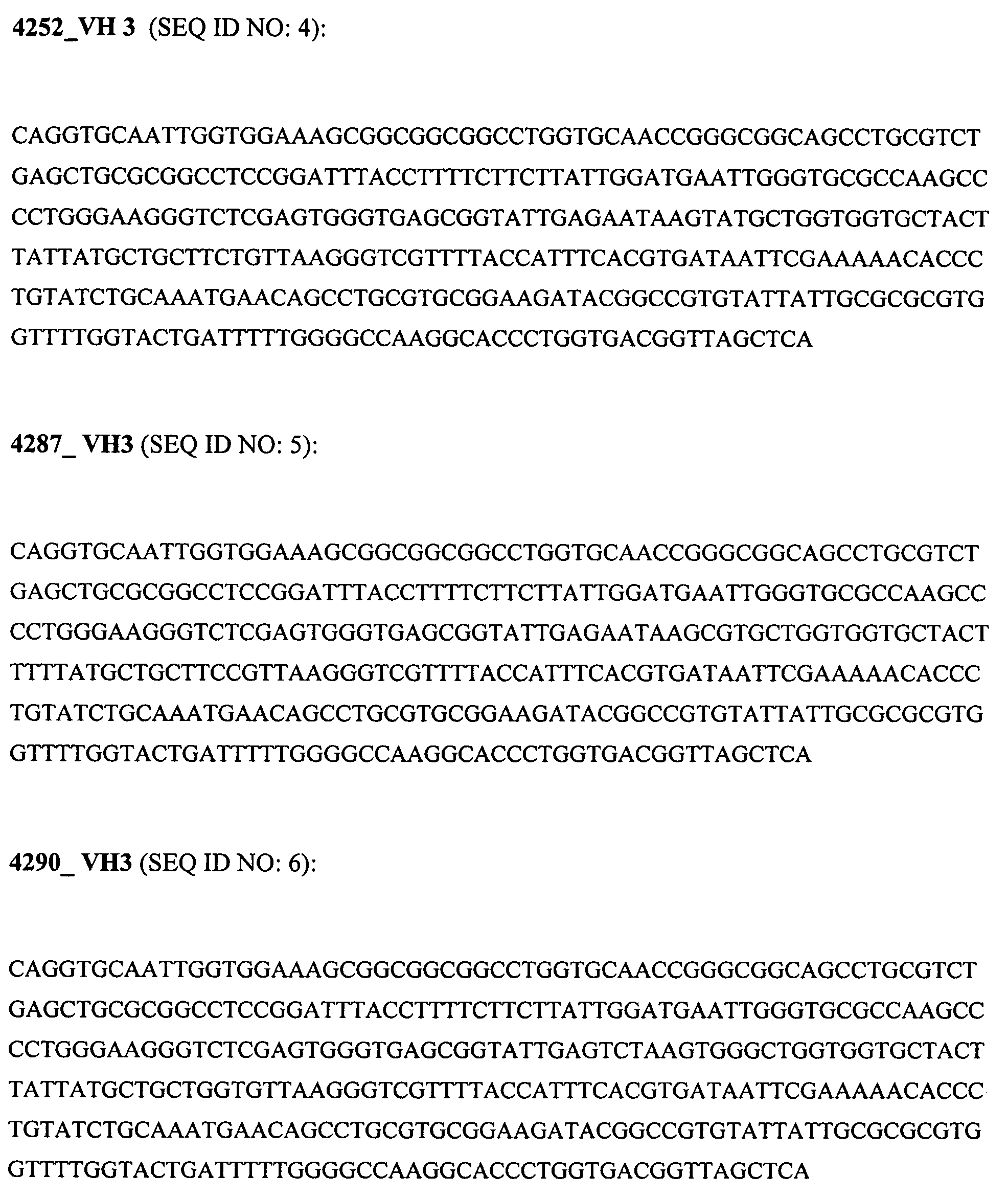Anti-Gm-Csf Antibodies and Uses Therefor
antigmcsf and anti-gm-csf technology, applied in the field of antigmcsf antibodies, can solve the problems of reducing the survival rate of eosinophils in asthmatic airways, reducing the number of eosinophils in the airway, and reducing the survival rate of eosinophils in the airway, and achieve the effect of effectively blocking the gm-csf/gm-csf receptor
- Summary
- Abstract
- Description
- Claims
- Application Information
AI Technical Summary
Benefits of technology
Problems solved by technology
Method used
Image
Examples
example 1
Generation of Human GM-CSF Specific Antibodies from the HuCAL GOLD® Library
[0108] A. Phagemid Rescue, Phage Amplification and Purification
[0109] HuCAL GOLD® library was amplified in 2×YT medium containing 34 μg / ml chloramphenicol and 1% glucose (2×YT-CG). After helper phage infection (VCSM13) at an OD600 of 0.5 (30 min at 37° C. without shaking; 30 min at 37° C. shaking at 250 rpm), cells were spun down (4120 g; 5 min; 4° C.), resuspended in 2×YT / 34 μg / ml chloramphenicol / 50 μg / ml kanamycin / 0.25 mM IPTG and grown overnight at 22° C. Phages were PEG-precipitated from the supernatant, resuspended in PBS / 20% glycerol and stored at −80° C. Phage amplification between two panning rounds was conducted as follows: mid-log phase E. coli TG1 cells were infected with eluted phages and plated onto LB-agar supplemented with 1% of glucose and 34 μg / ml of chloramphenicol. After overnight incubation at 30° C., colonies were scraped off and used to inoculate 2×YT-CG until an OD600nm of 0.5 was rea...
example 2
Identification of hGM-CSF Specific Antibodies
[0129] BEL extracts of individual E. coli clones selected by the above mentioned panning strategies were analyzed by ELISA or BioVeris (BioVeris M-series® 384 analyzer) in order to identify clones encoding hGM-CSF specific Fabs.
[0130] A. Enzyme Linked Immunosorbent Assay (ELISA) Techniques
[0131] Human recombinant biotinylated GM-CSF (R&D Systems) was coated at 1.5 μg / ml in PBS onto Neutravidin microtiter plates for 2 h at RT.
[0132] After coating of antigen the wells were blocked with PBS / 0.05% Tween (PBS-T) with 1% BSA for 1 h at RT. After washing of the wells with PB S-T BEL-extract, purified HuCAL® Fab or control IgGs were diluted in PBS, added to the wells and incubated for 1 h at RT. For detection of the primary antibodies, the following secondary antibodies were applied: alkaline phospatase (AP)-conjugated AffiniPure F(ab′)2 fragment, goat antihuman, -anti-mouse or -anti-rat IgG (Jackson Immuno Research). For the detection of AP-...
example 3
Identification of Anti-Human GM-CSF Fab Candidates that Inhibit the Interaction Between GM-CSF and the GM-CSF Receptor Alpha
[0141] 74 different hGM-CSF specific antibodies which were selected from the HuCAL GOLD® library were tested for the potency to inhibit the interaction between hGM-CSF and its receptor. The interaction was tested in two ways, (i) one being a proliferation assay using the GM-CSF dependent TF-1 cell line (Kitamura et al., 1989) and (ii) the other being a FACS analysis with a recombinant CHO cell line expressing the alpha chain of the GM-CSF receptor. In the TF-1 proliferation assay, the ability of the anti-GM-CSF antibodies to block the interaction of GM-CSF with the endogenous GM-CSF receptor consisting of the alpha and beta chain was analyzed leading to reduction in cell proliferation. In the FACS assay the specific inhibition of the interaction between GM-CSF and the alpha chain of the GM-CSF receptor was determined.
[0142] A. Cloning and Expression of macaca...
PUM
| Property | Measurement | Unit |
|---|---|---|
| Fraction | aaaaa | aaaaa |
| Fraction | aaaaa | aaaaa |
| Density | aaaaa | aaaaa |
Abstract
Description
Claims
Application Information
 Login to View More
Login to View More - R&D
- Intellectual Property
- Life Sciences
- Materials
- Tech Scout
- Unparalleled Data Quality
- Higher Quality Content
- 60% Fewer Hallucinations
Browse by: Latest US Patents, China's latest patents, Technical Efficacy Thesaurus, Application Domain, Technology Topic, Popular Technical Reports.
© 2025 PatSnap. All rights reserved.Legal|Privacy policy|Modern Slavery Act Transparency Statement|Sitemap|About US| Contact US: help@patsnap.com



